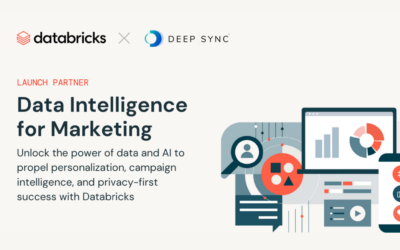With Google’s deprecation of third-party cookies, it’s more important than ever for companies to rely on their customer data. After all, you have all this data available at your fingertips—right in your own database! Using the data you already own to its full potential can be the key to success in the ever-evolving marketing industry.
In this blog post, we’ll cover what customer data is, methods for collecting it, best practices to make the most of your data, and different ways you can use customer data in your marketing strategy.
What Is Customer Data?
Customer data is the first-party data that companies collect through direct interactions with their current customers, website visitors, and newsletter subscribers. This data may include demographic information (like age, gender, income, or occupation), location, purchase history, and more.
Customer data can also include zero-party data, which is data that your customers intentionally share with you. This is often in the form of feedback—such as surveys, interviews, or poll answers—or contact information shared voluntarily.
Customer data is extremely valuable for businesses because it can be used to engage customers and improve the customer experience.
How can I collect customer data?
Customer data can be collected in various ways, including:
- Customer purchases or direct engagement with your company
- Surveys or questionnaires that customers voluntarily fill out
- Website analytics, including cookies on your own website
Regardless of how your business chooses to collect customer data, it is important to follow applicable privacy guidelines. Laws like the Colorado Privacy Act (CPA) and California Consumer Privacy Act (CCPA) have set strict rules on how businesses can collect, store, and use customer data. These regulations ensure that businesses handle customer data responsibly and maintain their customers’ trust.
How to make the most of your customer data
Maintain proper data hygiene practices.
According to research from IBM, poor data quality costs the U.S. economy approximately $3.1 trillion each year. This substantial financial impact can affect all businesses, regardless of how careful they are in their data collection. On average, customer data decays at a rate of 25% – 30% per year, and business data decay rates can be even higher.
It’s next to impossible to review and update your database on your own. But, a reliable data hygiene provider can help you resolve errors, remove duplicate data, suppress contacts who have become unreachable, standardize addresses, and update missing or incorrect contact information.
Best practices may include taking steps such as:
- Getting a Data Quality Report or other database audit to assess the current accuracy of your data
- Applying change of address processing like NCOALINK® to ensure Move Update compliance when preparing for a mailing
- Using Data Hygiene and Suppression Services to remove dirty data and unreachable contacts
- Enlisting an Address Validation and Correction solution to standardize addresses in your database
- Creating data entry practices to ensure your team enters contact information in a standardized format
Ensuring your data stays clean and accurate is the key to making sure you can successfully use it in your marketing campaigns.
How can customer data be used for marketing?
Clean, accurate customer data has many uses for marketing purposes. Here are some ways you can use your data to its full potential:
- Enhance your data: Now that you have a clean slate, add valuable demographic and interest attributes to help you understand who your customers are and what they may want or need.
- Segment your audience: Segmenting your audience by age range, location, income, and more can help you create campaigns that are tailored to each unique segment.
- Personalize your marketing content: With clean data, it’s easier to personalize your outreach with customers’ names, customized offers, personalized upsell suggestions, and more.
- Extend your reach online: Onboard your data for programmatic and social campaigns that reach your customers where they are spending time online.
- Identify lookalike audiences: Lookalike audience models use the intelligence in your data to create high-quality audiences that resemble your current consumers, allowing you to identify new prospects that are more likely to convert.
- Enhance product development: You can use your customer information, like data pulled from website visits or purchase history, to understand what products or features your customers are most interested in, and then use this information to guide your product development efforts. This can lead to more successful products that meet the needs and wants of your customers and foster customer loyalty in the long run.
By using your data to fine-tune your offerings and your messaging, you can make sure your company stays top-of-mind for your customers.
Turn Your Data Into Your Competitive Advantage
Customer data helps you understand your customer’s wants and needs, personalize your marketing communications, and find new customers that match your ideal target market. So, having clean data is a big part of creating a winning strategy that will help you outperform your competition.
For help keeping your first-party data actionable, work with a data solutions provider like Deep Sync. We have the tools, skillset, and know-how to activate your data for improved targeting, enhanced customer engagement, strategic positioning, and improved marketing ROI.
With data hygiene, data enrichment, customer profiling, and identity resolution services, Deep Sync can help you do more with your data. Contact us to learn more.
For more information about using your data to its full potential, review the following additional resources:
- First-Party Data: Leveraging Audience Insights. Deep Sync’s guide to first-party data can help you make the most of your data.
- Boost First-Party Match Rates with Enhanced Social Onboarding. Enhanced Onboarding can help you reach more of your current customers on social media by improving your offline-to-online onboarding results.
- How Lookalike Audiences Can Fuel Omnichannel Campaigns. For omnichannel marketing to be successful, marketers should activate the same, exact lookalike audience across multiple platforms and channels.












0 Comments